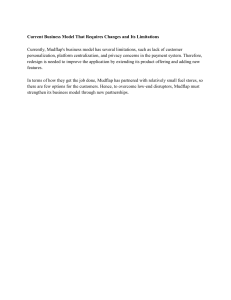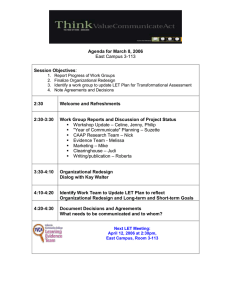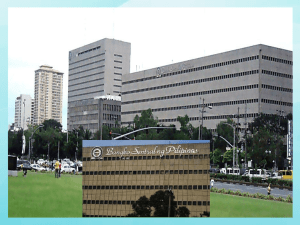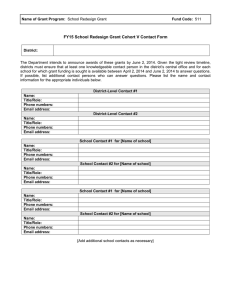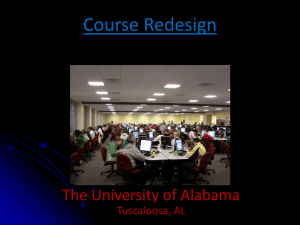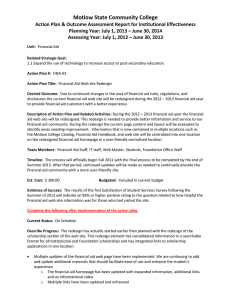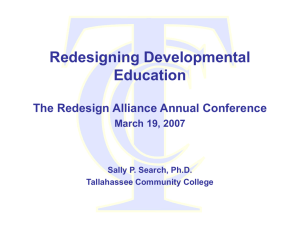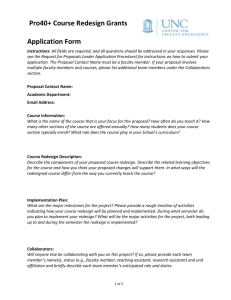Rise of Big Data in Higher Education
advertisement
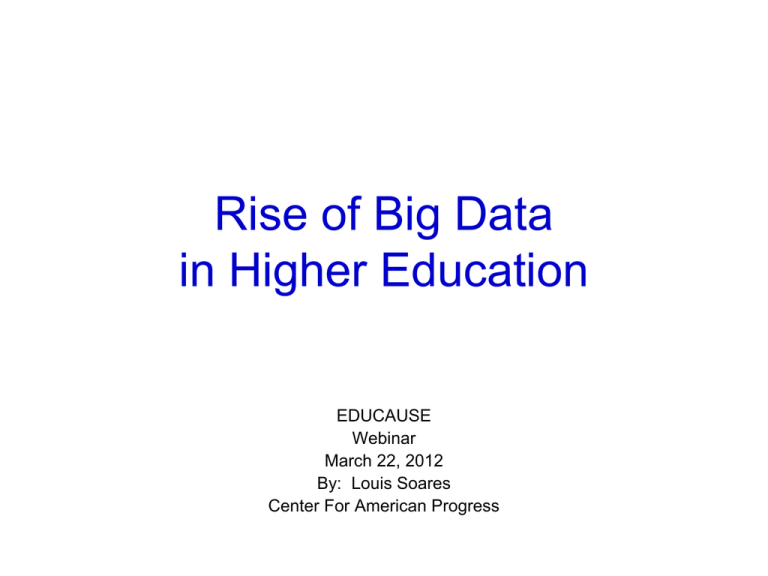
Rise of Big Data in Higher Education EDUCAUSE Webinar March 22, 2012 By: Louis Soares Center For American Progress Overview • • • • • Personal Data and Consumer Agency Big Data in Higher Education? Why Big Data Matters? Co-Creating Value with Big Data Institutional Practices and Public Policies What if Education Data was Personal and Mobile? http://www.youtube.com/watch?NR=1&v=8O1i0InZ8bM&feature=endscreen The Rise of Consumer Agency Big Data In Higher Education? What is Big Data? • Fine-grain Information – Customer Experiences – Organizational Processes – Emergent Trends • Generated By Doing Business Students Doing Business • • • • • • • • Course Selection Course Registration Apply for Financial Aid Class Participation Study Alone or in groups Use Online Resources Purchase/Return Textbook Work to support education Black Box EDU Technology-Enabled Learning Each of these interactions is an opportunity to gather Big Data U.S. Department of Education, National Education Technology Strategy, 2010 Questions? Why Big Data Matters? • Cost • Quality • Knowing the customer • Value Co-Creation College Is Expensive Quality Is In Question Study of 2,300 undergraduates – 45 percent “demonstrated no significant gains in critical thinking, analytical reasoning, and written communications during the first two years of college” – 36 percent show no improvement in four years Additional 16M degrees needed to be the most educated by 2020 # of Credentials Source 1.3 million degrees projected population growth 4.3 million degrees increase high school graduation rates, college-going rates of recent HS graduates, and postsecondary graduation rates 4.2 million degrees half of the 8.4 million adults (25-34) w/ some college complete degree 2.6 million degrees third of the 8.8 million adults (35-44) w/ some college complete degree 3.4 million degrees fifteen percent of the 22.7 million adults (25-44) who have completed high school, but not attended college, complete a degree Source: National Center for Higher Education Management Systems, 2009 Know Your Customer Characteristics on Non-Traditional • • • • • • • delayed enrollment PSE beyond the first year after HS Attend part time Are financially independent from their parents Work full time Have dependents other than a spouse Are a single parent Have no high school diploma or GED What Is A Service? An offering in which: • “deeds, processes, and performances” are provided in “exchange relationships” among organizations and individuals • Value is co-created by supplier and consumer • Examples include: – – – – educational services, health care services, financial services, Transportation services, College As A Service Service Relationship A. University A & B create value together Responsibility Relationship Responsibility Relationship A on C University Resources People Technology Processes B. Student C. College Education Transforms student knowledge through: agreements, relationships and other exchanges among students and university faculty, including courses offered and taken, tuition paid, and work-study arrangements. B on C Student Resources Finances Preparation Self-Awareness Informed Questions? Co-Creating Value with Big Data Student Learning • • • • • 425,000 students Web-based learning environments Self-directed Learning Adaptive instructional software Data Dashboards – Improve individual performance – Enhance course redesign – Predict future performance Course Enrollment • 40,000 Students • Course Recommendation Engine – Service Oriented Higher Education Recommendation Personalization Assistant • Student Profile – Course preferences – Schedules – Past courses • Tools – Tutors – Time-management tools – Life-planning resources SHERPA Course Success • • • • Early Warning System Study patterns and performance Student/Faculty Dashboard Profile Development – Student demographics – Grade books – Activity logs from online resources • Benchmark successful students • Seek Support Student Lifestyle Management • Learning Communities • Behavioral Science • Student Profile – Work/life details – Academics – Preferences • Nudges to stay on-track – – – – Mobile Platform Time management Academic Setbacks Peer groups Institutional Practices and Public Policies Five Practices of High Performing Institutions Increase Rate of Degree Completion • Culture of Completion and Outplacement • Reduce nonproductive credits Reduce Cost per Student • Redesign instruction delivery • Redesign core support services – • (HR, IT, Finance, student services, academic support services, plant operations) Optimize non-core services and other operations – (research, public services, auxiliary enterprises) Six Characteristics of Instruction Redesign that Improve Completion and Reduces Costs Whole Course Redesign Target whole course not a single class Analyze time spent on each activity in course by person Active Learning Move course from teacher led to active and learner-centered Note taking replaced by active learning exercises Computer-based Learning Web-based tutorials and exercises and low-stakes quizzes frequent practice and feedback Mastery Learning Greater flexibility for when students can engage with a course, not self-paced Organized by the need to master specific learning objectives, modular On-Demand Help Variety of different supports build sense of learning community Projects replace lectures w/ small group activities (tech supported, staffed assisted) Alternative Staffing Apply right level of human intervention to particular problems Task specific labor: faculty v. GTA, Peer mentors, Course assistant IT Infrastructure for Big Data Source: Action Analytics, EDUCAUSE REVIEW,January/February 2008, Authors: Donald Norris, Linda Baer, Joan Leonard, Louis Pugliese, and Paul Lefrere Public Policies for Big Data 1. Create guidelines for how data generated through these technology tools should be treated in order to promote student privacy while allowing for the data to be shared in a social environment. 2. Review the data it currently collects to find areas where the information might supplement the emerging user-generated data in ways that help students make better choices. 3. Fund the development or spread of emerging “personalization” tools through competitive grants. A special focus could be placed on institutions that serve low-income students and students of color. THANK YOU! QUESTIONS?? DISCUSSION
